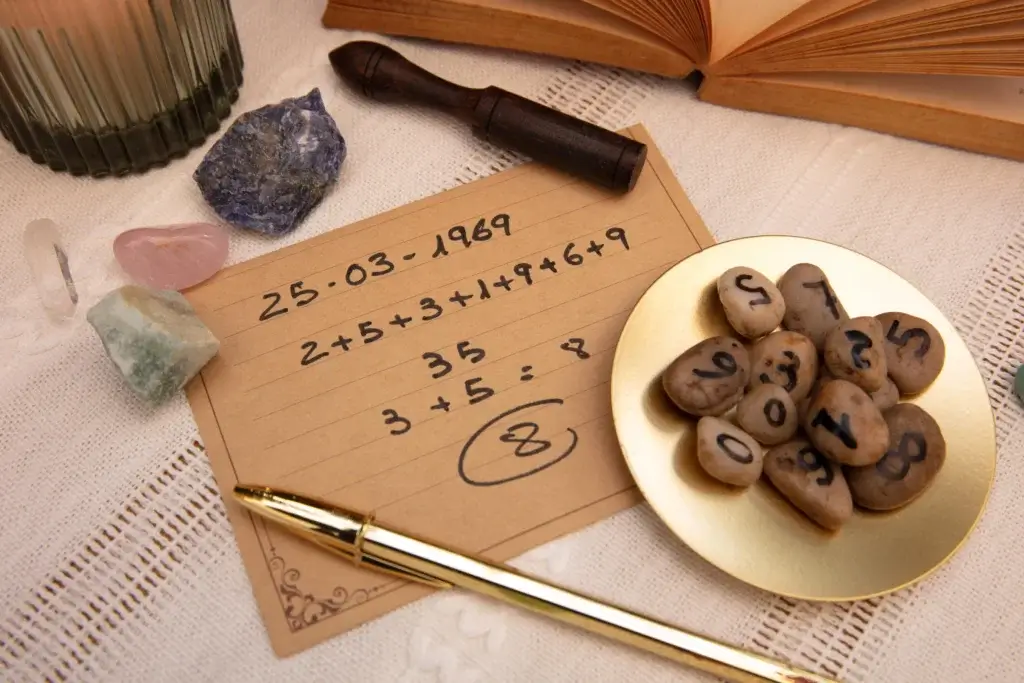

Many students struggle with slow calculations, whether solving multiplication, division, or squaring problems. Exams like SSC, JEE, IMO, CAT, Banking Exams, and CBSE board tests demand accuracy under time pressure. Long sums, algebra, or higher-level equations often cause stress, reduce confidence, and increase errors, making even basic arithmetic feel overwhelming.
Vedic Maths provides a powerful solution to these challenges. Originating from India, the term Veda means “knowledge,” and Vedic Maths is a system of techniques that allows learners to solve complex problems quickly and mentally.
The foundation of these methods lies in Vedic Maths Tricks, which include 16 Sutras and 13 Sub-Sutras. By applying these formulas, learners can perform calculations accurately and save time. In this blog, we will explore 10 essential Vedic Maths tricks, with step-by-step examples for faster problem-solving, higher accuracy, and improved mental agility.
What is Vedic Mathematics?
Vedic Mathematics is an ancient system of calculation from India that uses specific formulas, called Sutras, to solve arithmetic, algebra, and higher-level problems quickly and mentally. It simplifies complex operations, reduces calculation time, and improves accuracy, making it useful for students, competitive exams, and daily problem-solving.
Who Developed Vedic Maths?
Vedic Mathematics was developed by Indian mathematician Jagadguru Shri Bharathi Krishna Tirthaji between 1911 and 1918. Revered as the father of Vedic Mathematics, he systematically compiled ancient mathematical techniques into a practical system of Sutras.
These formulas simplify arithmetic, algebra, and higher-level calculations, enabling faster and more accurate problem-solving. Today, Vedic Maths is recognized worldwide for its effectiveness in exams, competitive tests, and mental calculations.
10 Best Vedic Maths Tricks for Addition, Multiplication, Subtraction & Division
1. Squaring a Number Ending with 5
To square a number ending with 5, multiply the digits on the left by one more than themselves and then append 25.
Example: (75)²
- Step 1: Multiply the first digit by one more than itself: 7 × (7 + 1) = 56.
- Step 2: Append 25 to the result: 5625.
Answer: 75² = 5625
Try: 35², 85², 95², 65²
2. Multiplying Any Number by 5
Divide the number by 2. If the result is a whole number, add 0 at the end. If it is a decimal, add 5 instead.
Example: 324 × 5
- Step 1: Divide 324 by 2 → 324 ÷ 2 = 162.
- Step 2: Since it is a whole number, add 0 at the end → 1620.
Answer: 324 × 5 = 1620
Try: 217 × 5, 489 × 5, 568 × 5
3. Subtracting from 1000, 10000, etc.
Subtract all digits from 9, except the last digit, which you subtract from 10.
Example: 10000 – 5623
- Step 1: Subtract the first digit from 9 → 9 – 5 = 4.
- Step 2: Subtract the second digit from 9 → 9 – 6 = 3.
- Step 3: Subtract the third digit from 9 → 9 – 2 = 7.
- Step 4: Subtract the last digit from 10 → 10 – 3 = 7.
Answer: 10000 – 5623 = 4377
Try: 1000 – 387, 10000 – 4095, 1000 – 726
4. Multiplying 2-Digit Numbers from 11 to 19
Add the unit digit of the smaller number to the larger number, multiply by 10, then add the product of the unit digits.
Example: 14 × 17
- Step 1: Add the unit digit of the smaller number to the larger → 17 + 4 = 21.
- Step 2: Multiply the sum by 10 → 21 × 10 = 210.
- Step 3: Multiply the unit digits of both numbers → 4 × 7 = 28.
- Step 4: Add the two results → 210 + 28 = 238.
Answer: 14 × 17 = 238
Try: 12 × 16, 13 × 15, 18 × 19
5. Dividing a Large Number by 5
Multiply the number by 2, then shift the decimal point one place to the left.
Example: 246 ÷ 5
- Step 1: Multiply 246 by 2 → 246 × 2 = 492.
- Step 2: Move the decimal point one place left → 49.2.
Answer: 246 ÷ 5 = 49.2
Try: 132 ÷ 5, 478 ÷ 5, 985 ÷ 5
6. Multiplying Any 2-Digit Number by 11
Add the two digits of the number and place the sum between them.
Example: 36 × 11
- Step 1: Add the digits → 3 + 6 = 9.
- Step 2: Place the sum between the original digits → 396.
Answer: 36 × 11 = 396
Try: 47 × 11, 52 × 11, 18 × 11
7. Multiplying by 12 Quickly
Double the number and add it to ten times itself.
Example: 134 × 12
- Step 1: Multiply 134 by 10 → 134 × 10 = 1340.
- Step 2: Multiply 134 by 2 → 134 × 2 = 268.
- Step 3: Add the two results → 1340 + 268 = 1608.
Answer: 134 × 12 = 1608
Try: 76 × 12, 243 × 12, 58 × 12
8. Multiplying Two 3-Digit Numbers Close to 100
Add the deviation of one number to the other, multiply by the base, and then add the product of deviations.
Example: 103 × 107 (base 100)
- Step 1: Add deviation of 107 (7) to 103 → 103 + 7 = 110.
- Step 2: Multiply by the base → 110 × 100 = 11000.
- Step 3: Multiply the deviations → 3 × 7 = 21.
- Step 4: Add the two results → 11000 + 21 = 11021.
Answer: 103 × 107 = 11021
Try: 102 × 108, 105 × 109, 101 × 106
9. Converting Kilograms to Pounds Quickly
Multiply kilograms by 2, divide by 10, then add the result to the doubled value.
Example: Convert 95 kg to pounds
- Step 1: Multiply by 2 → 95 × 2 = 190.
- Step 2: Divide the doubled value by 10 → 190 ÷ 10 = 19.
- Step 3: Add the two values → 190 + 19 = 209.
Answer: 95 kg ≈ 209 lbs
Try: 112 kg, 68 kg, 85 kg
10. Finding the Square of Any Number Using Base
Choose a nearby base, calculate the difference, multiply the sum of the number and difference by the base, then add the square of the difference.
Example: 97² (base 100)
- Step 1: Find the difference → 97 – 100 = -3.
- Step 2: Add the difference to the number → 97 + (-3) = 94.
- Step 3: Multiply by the base → 94 × 100 = 9400.
- Step 4: Add the square of the difference → 9400 + 9 = 9409.
Answer: 97² = 9409
Try: 98², 102², 105², 93²
Advantages of Practicing Vedic Mathematics for Children
- Faster Calculations – Vedic Maths allows children to solve arithmetic problems much quicker than conventional methods, often completing tasks 10 to 15 times faster.
- Simplified Learning – By using straightforward techniques, kids can handle complex math problems without memorizing lengthy formulas.
- Accuracy and Precision – Vedic Maths helps reduce careless mistakes, enabling children to arrive at correct answers with greater consistency.
- Sharper Focus and Mental Agility – Practicing these tricks improves attention span, memory retention, logical thinking, and the ability to analyze situations quickly.
- Balanced Brain Development – According to studies, Vedic Maths stimulates both hemispheres of the brain, enhancing visualization skills, concentration, and overall mental clarity.
- Reduces Anxiety Around Math – Regular practice helps children overcome math-related stress, build a positive attitude toward numbers, and eliminate fear of the subject entirely.

blog & news
Stay Informed, Stay Inspired.


Online vs In-Person Tutoring: Which Is Better for Students?

Private 1-on-1 Tuition or Group Tutoring – What to Choose?
Start your journey
with ConnectEd.

Start your journey
with ConnectEd.

Get in touch with us with any inquiries or assistance.
ADDRESS
Visit us for a personal consultation or meeting.


